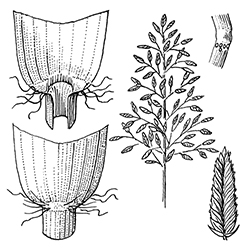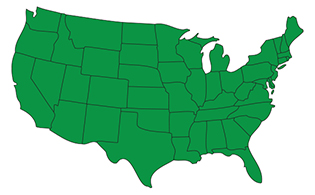

Stinkgrass
Eragrostis cilianensis
Stinkgrass is an annual grassy weed that is also known by its scientific name, Eragrostis cilianensis. This lawn weed is named for the foul odor it emits when damaged.
Identify

Bunch

Hairy

Rolled
Stinkgrass can be identified as a slender, tufted, annual grassy weed. It has a continuous, narrow collar with long hairs at the edges. The sheaths of this lawn weed are slightly compressed, and the blades are tapered—dull on the top and glossy on the bottom. Additionally, the nodes feature a ring of glands below the blades, and the seed head forms a spreading, gray-green panicle. This grassy weed emits a disagreeable odor when its leaves are bruised or cut—hence the name Stinkgrass.
Life Cycle
These lawn weeds often occur in croplands, pastures and hayfields, as well as in non-crop areas, including lawns and landscaped areas. Stinkgrass can be found throughout much of North America. These grassy weeds are also annuals, meaning they live for only one season and are typically easy to control because they lack the complex underground structures needed to spread new plant growth through creeping roots. Still, annuals produce tons of seeds that can infest and dominate your yard under the right conditions.

Control
A common lawn weed in the Midwestern United States, Stinkgrass can raise certain issues when it comes to management and weed control. Cultural practices—such as hand-pulling lawn weeds or proper watering and mowing—can be effective in preventing Stinkgrass. However, they won't help much when this grassy weed is already established. For effective weed removal, professionally selected and applied weed control treatments are your best bet for eradication.







